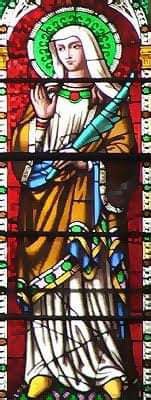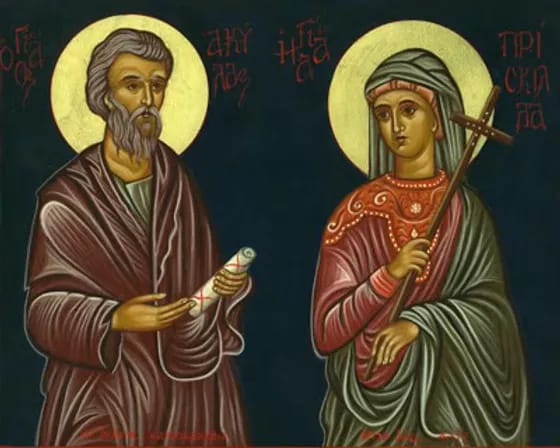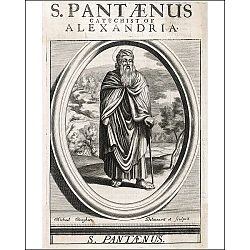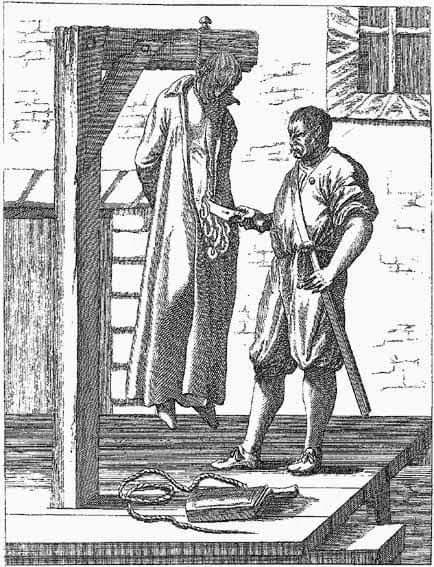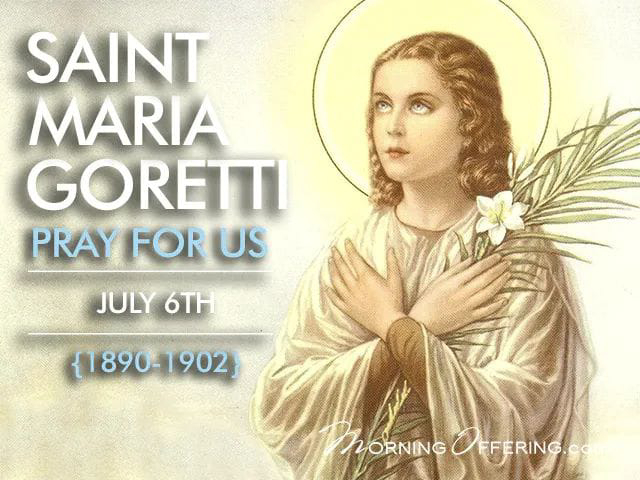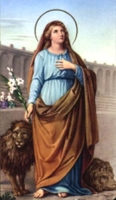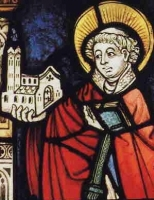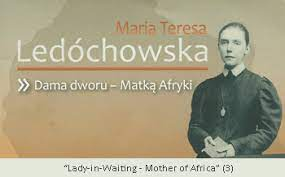St. Withburga
புனித வித்பர்கா (-743)
இவர் இங்கிலாந்து நாட்டைச் சார்ந்தவர்; இவரது தந்தை இங்கிலாந்து நாட்டின் கிழக்கு ஆங்கிலேயாவை ஆண்டுவந்த அன்னா என்பவராவார்.
இவரது தந்தை எதிரி நாட்டோடு போர்தொடுக்கச் சொல்லும்போது போரில் எதிரிகளால் கொல்லப்பட்டார். இச்செய்தியை அறிந்த இவர் பெரிதும் வருந்தி அழுதார்.
பின்னர் இவர் எல்லாவற்றையும் துறந்துவிட்டுத் துறவு வாழ்க்கையை மேற்கொள்ளத் தொடங்கினார்.
இவர் தன் சொந்த முயற்சியால் டெரகம் என்ற இடத்தில் ஒரு துறவுமடத்தையும் கோயிலையும் கட்டிக்கொண்டிருக்கிறபொழுது, இவரால் பணியாளர்களுக்குப் போதிய உணவு கொடுக்க முடியாத சூழ்நிலை ஏற்பட்டது. அப்போது இவர் புனித கன்னி மரியாவிடம் உருக்கமாக வேண்ட, அவர் பணியாளர்களுக்கு அற்புதமான முறையில் உணவு கிடைக்கச் செய்தார்.
இவர் கோயிலைக் கட்டிக்கொண்டிருக்கிற போதே இவரது உயிர், இவருடைய உடலைவிட்டுப் பிரிந்தது. இதற்குப் பிறகு கோயில் கட்டும் பணியை இவருடைய மடத்தில் இருந்த ஏனைய சகோதரிகள் தம் பொறுப்பில் எடுத்து, நிறைவு செய்தார்கள்.
இவர் 743 ஆம் ஆண்டு இறையடி சேர்ந்தார்.
Feastday: July 8
Death: 743
Withburga (d.c. 743) + Virgin and Benedictine nun. The youngest daughter of King Anna of East Anglia, England (d. 653). Following the death of her father in battle, she moved to Dereham where she established a nunnery and a church. She died with the church unfinished, on March 17. Her remains were later stolen by monks who enshrined her in Ely. A fresh spring, called Withburga's Well, sprang up at her grave in Dereham. Feast day: July 8.
Wihtburh (or Withburga) (died 743) was an East Anglia saint, princess and abbess who was possibly a daughter of Anna of East Anglia, located in present-day England. She founded a monastery at Dereham in Norfolk. A traditional story says that the Virgin Mary sent a pair of female deer to provide milk for her workers during the monastery's construction. Withburga's body is supposed to have been uncorrupted when discovered half a century after her death: it was later stolen on the orders of the abbot of Ely. A spring appeared at the site of the saint's empty tomb at Dereham.
Family
Tradition describes Wihtburh as the youngest of the daughters of Anna of East Anglia, but she is not mentioned by Bede. He was well-informed about and described her elder sisters[1] Seaxburh of Ely, Æthelthryth and Æthelburh of Faremoutiers and Sæthryth, her older half-sister.[2]
Legend of Saint Wihtburh and the does
After her father's death (c. 653), Wihtburh built a convent in East Dereham, Norfolk. A traditional story relates that while she was building the convent, she had nothing but dry bread to give to the workmen. She prayed to the Virgin Mary and was told to send her maids to a local well each morning. There they found two wild does which were gentle enough to be milked; they provided nutritious drink for the workers. This allowed the workers to be fed.[3]
The local overseer did not like Wihtburh or her miracles. He decided to hunt down the does with dogs and prevent them from coming to be milked. He was punished for his cruelty when he was thrown from his horse and broke his neck. This story is commemorated in the large town sign in the centre of East Dereham. The name Elveden of the village in Suffolk seems to come from Old English *ælfa-dene 'elves' valley': the name appears, translated into Latin, as vallis nympharum 'valley of nymphs' in the mid-12th-century Miracula sancte Wihtburge.[4]
Wihtburh died in 743 and was buried in the cemetery of Ely abbey.[5] When her body was dug up 55 years later, it was found not to have decayed. This was considered a miracle and her remains were re-interred in the church which she had built in Dereham. The church became a place of pilgrimage, with people visiting Wihtburh's tomb.
In 974 Brithnoth, the abbot of Ely, elected to steal her body so that he could profit from the pilgrims' visits. Brithnoth and some armed men went to Dereham and organised a feast. When the Dereham men were properly drunk, the Ely mob stole Withburga's body and set off for home. Dereham men soon found out that this crime had taken place and set off after the Ely tomb-robbers.[6]
The two sides had a pitched fight, using spears as well as fists. As the men approached Ely, however, the thieves had the advantage of knowing their way through the swamps and marshes. They were successful at re-interring Wihtburh in Ely.
When the Dereham men returned home, they discovered that a spring had arisen in Wihtburh's violated tomb. The water in this spring was considered to be compensation for the loss of their saint; pilgrims continued to come and now could drink from the water. The spring has never run dry. The water in Wihtburh's tomb can be visited to this day
St. Raymond of Toulouse
Feastday: July 8
Death: 1118
A chanter and canon renowned for generosity. A native of Toulouse, France, he was known originally as Raymond Gayrard. After the death of his wife, he became a canon of St. Sernin, Toulouse, helping to rebuild the church which became a popular place for pilgrims. After his death on July 3, many miracles were reported at his tomb.
Raymond of Toulouse, also known as Raymond Gayrard, was a chanter and canon renowned for generosity.[1] A native of Toulouse, who entered religious life after the death of his wife. He became a canon of St. Sernin, Toulouse, helping to rebuild the church which became a popular place for pilgrims.
After his death on 3 July 1118, many miracles were reported at his tomb and he was beatified in 1652 by Pope Innocent X
St. Marie Adolphine Dierks
Feastday: July 8
Birth: 1866
Death: 1900
Beatified: 24 November 1946 by Pope Pius XII
Canonized: 1 October 2000 by Pope John Paul II in Rome
Chinese Martyr
Chinese Martyrs (traditional Chinese: 中華聖烈士; simplified Chinese: 中华圣烈士; pinyin: Zhōnghuá shéng lièshì; Wade–Giles: Chung1-hua2 shêng4-lieh4-shih4) is the name given to a number of members of the Catholic Church and the Eastern Orthodox Church who were killed in China during the 19th and early 20th centuries. They are celebrated as martyrs by their respective churches. Most were Chinese laity, but others were missionaries from various other countries; many of them died during the Boxer Rebellion.
Eastern Orthodox
The Eastern Orthodox Church recognizes 222 Orthodox Christians who died during the Boxer Rebellion as "Holy Martyrs of China". On the evening of 11 June 1900 leaflets were posted in the streets, calling for the massacre of the Christians and threatening anyone who would dare to shelter them with death.[2]
They were mostly members of the Chinese Orthodox Church, which had been under the guidance of the Russian Orthodox since the 17th century and maintained close relations with them, especially in the large Russian community in Harbin. They are called new-martyrs, as they died under a modern regime. The first of these martyrs was Metrophanes, Chi Sung, leader of the Peking Mission, who was killed, along with his family, during the Boxer Rebellion. All told, 222 members of the Peking Mission died.
Roman Catholic
The Roman Catholic Church recognizes 120 Catholics who died between 1648 and 1930 as its "Martyr Saints of China". They were canonized by Pope John Paul II on 1 October 2000. Of the group, 87 were Chinese laypeople and 33 were missionaries; 86 died during the Boxer Rebellion in 1900.[4] The Chinese Martyrs Catholic Church in Toronto, Ontario is named for them.
Protestant
Many Protestants also died during the Boxer Rebellion, including the "China Martyrs of 1900", but there is no formal veneration (according to their religious beliefs) nor a universally recognized list.
At least 189 missionaries and 500 native Chinese Protestant Christians were murdered in 1900 alone.[5] Though some missionaries considered themselves non-denominationally Protestant, among those killed were Baptists, Evangelicals,[6] Anglicans, Lutherans,[7][unreliable source?] Methodists,[8] Presbyterians[9] and Plymouth Brethren.
St. Maria Chaira
Feastday: July 8
Birth: 1872
Death: 1900
Beatified: 24 November 1946 by Pope Pius XII
Canonized: 1 October 2000 by Pope John Paul II in Rome
Chinese Martyrs (traditional Chinese: 中華聖烈士; simplified Chinese: 中华圣烈士; pinyin: Zhōnghuá shéng lièshì; Wade–Giles: Chung1-hua2 shêng4-lieh4-shih4) is the name given to a number of members of the Catholic Church and the Eastern Orthodox Church who were killed in China during the 19th and early 20th centuries. They are celebrated as martyrs by their respective churches. Most were Chinese laity, but others were missionaries from various other countries; many of them died during the Boxer Rebellion.
St. Arnulf of Soissons
Feastday: July 8
Patron: of hop-pickers, beer brewing
Birth: 1040
Death: 1087
Benedictine bishop and founder of the abbey of Onendbourg in France. Born in Flanders, Belgium, in 1040, Arnulf had a military career in the service of Robert and Henry I, kings of France. Retiring from the army, Arnulf entered the Benedictines at Saint-Michel Monastery in Soissons, France. He was a hermit there until elected abbot. He was then appointed the bishop of Soissons, When faced with a usurper, Arnulf founded the abbey of Onendbourg.
For disambiguation from other saints with the same name, see Saint Arnold.
Arnold (Arnoul) of Soissons or Arnold or Arnulf of Oudenburg[1] (c. 1040–1087) is a saint of the Catholic Church, the patron saint of hop-pickers, Belgian brewers.[2]
Biography
Arnold, born in Brabant, the son of a certain Fulbertus[3] was first a career soldier before settling at the Benedictine St. Medard's Abbey, Soissons, France. He spent his first three years as a hermit, but later rose to be abbot of the monastery. His hagiography states that he tried to refuse this honor and flee, but was forced by a wolf[4] to return. He then became a priest and in 1080, bishop of Soissons, another honor that he sought to avoid. When his see was occupied by another bishop, rather than fighting, he took the opportunity to retire from public life, founding the Abbey of St. Peter in Oudenburg.[5]
As abbot in Oudenburg, Arnold brewed beer, as essential in medieval life as water. He encouraged local peasants to drink beer, instead of water, due to its "gift of health". During the process of brewing the water was boiled and thus freed of pathogens, making the beer safer to drink. The beer normally consumed at breakfast and during the day at this time in Europe was called small beer, having a very low alcohol content, and containing spent yeast. It is likely that people in the local area normally consumed small beer from the monastery, or made their own small beer at the instructions of Arnold and his fellow monks. During one outbreak of sickness, Arnold advised the local people to avoid consuming water, in favor of beer, which advice effectively saved lives.[6]
One miracle tale says, at the time of an epidemic, rather than stand by while the local people fell ill from drinking water, Arnold had them consume his monastery brews. Because of this, many people in his church survived the plague.[7] This same story is also told of Arnulf or Arnold of Metz, another patron of brewers.[8]
Legacy
There are many depictions of St. Arnold with a mashing rake in his hand, to identify him.[8] For example, the label on Steenbrugge Abbey beers has a picture of St Arnold holding a mash rake.[9]
Arnold is honoured in July with a parade in Brussels on the "Day of Beer."[8]
Miracles that were reported at his tomb were investigated and approved by a council at Beauvais in 1121; Arnold's relics were translated to the church of Saint Peter, Aldenburg in 1131.[10] St. Arnold's feast day is 14 August
Saint Killian
புனித. கிளியன் (St.Kilian)
ஆயர், மறைசாட்சி
பிறப்பு
640
வூர்ட்ஸ்பூர்க் ( Wurzburg )
இறப்பு
ஜூலை 8, 689
வூர்ட்ஸ்பூர்க் (Würzburg)
முத்திபேறுபட்டம்: 788
இவர் பெயரில் வூர்ட்ஸ்பூர்க்கில் ஓர் ஆலயம் உள்ளது. பல வருடங்களாக இவ்வாலயம் புனித தலமாக இருந்தது. அங்குள்ள கிரிப்தா (Krypta)என்ற சிற்றாலயத்தில் உள்ள கல்லறையில் இப்புனிதரின் உடல் அடக்கம் செய்யப்பட்டுள்ளது. அவர் ஆயராக இருந்தபோது பயன்படுத்திய, தலையில் வைக்கும் தொப்பியும்,கையில் பிடிக்கும் நீண்ட பெரிய சிலுவையும் பாதுகாக்கப்பட்டு, பார்வைக்கு வைக்கப்பட்டது. மற்றும் சில பொருட்களும், திருவிவிலியம் மைன்ஸ்(Mainz) என்ற மறைமாவட்டத்திற்கு சொந்தமான நூலகத்தில் வைத்து பாதுகாக்கப்படுகின்றது. இவரின் வாழ்க்கை வரலாறு மிக நீண்ட அளவில் இருப்பதால் வரலாறாக வடிவமைக்கப்பட்டது.
இவர் 687 ஆம் ஆண்டில் மிக சிறந்த ஆயர் என்ற பெருமையை பெற்றார். வூர்ட்ஸ்பூர்க் மக்களிடையே இவரின் பெயரில் தனிப்பட்ட நம்பிக்கை வளர்ந்தது. 689 ஆம் ஆண்டு கெய்லானா (Gailana) என்ற நாட்டை சார்ந்த ஓர் அரசன், இனத்தின் பெயரால், ஆயர் கிளியன் கொலைசெய்ய திட்டமிட்டான். அவருடன் இணைந்து பணிபுரிந்த குருக்கள் கோலோண்ட்(Kolont) மற்றும் டோப்னான்(Tofnan) இருவரும் முதலில் கொல்லப்பட்டார்கள். நற்செய்திக்கு சான்று பகரும் விதமாக இருவரும் மறைசாட்சியானார்கள். பிறகு கிளியன் அவர்களின் செப வாழ்வினால் அரசர் குடும்பத்தினர் தூண்டப்பட்டு, வூர்ட்ஸ்பூர்க் வந்து ஆயரிடம் ஞானஸ்நானம் பெற்று மனந்திரும்பினர். பாவமன்னிப்பு பெற்று இறைவனை நம்பினர். ஆனால் அரசனின் படையை சேர்ந்தவர்கள், அரசருக்கு தெரியாமலேயே ஆயரை கொன்றார்கள். இவர்கள் மூவருக்குமே (கிளியன், கோலோண்ட், டோப்னான்) வூர்ட்ஸ்பூர்க் பேராலயத்தில் கல்லறைகள் உள்ளது. உலகப் போரில் இப்பேராலயமானது அழிவுக்குள்ளாக்கப்பட்டதால், 1910 ஆம் ஆண்டு மீண்டும் புதுப்பிக்கப்பட்டு நொய்முன்ஸ்ரர் பேராலயம்(Neumünsterkirche) என்று இன்றும் அழைக்கப்பட்டு, ஆயிரக்கணக்கான மக்கள் திருப்பலியில் பங்கெடுக்கப்படுகின்றது.
Also known as
• Apostle of Franconia
• Chilianus, Chillian, Chillien, Cilian, Cillíne, Cillian, Kilian, Killena
Profile
Born to the Irish nobility. Monk at the monastery of Hy. May have been an abbot. Travelling bishop throughout Ireland. Missionary with eleven companions through Gaul to Würzburg, Germany whose people he found to be pagan, and whom he resolved to convert. Pilgrim to Rome, Italy in 686 where he received papal authority for his mission; Pope Conon ordained him as a missionary bishop. Kilian then returned to Würzburg in 687 with Saint Colman and Saint Totnan. With them, he evangelized East Franconia and East Thuringia, areas in modern Bavaria, Germany, converted Duke Gozbert and a large part of Gozbert's subjects.
After Duke Gozbert converted, Killian explained that the duke's marriage with Geilana, his brother's widow, was unlawful. He secured the duke's promise to leave her, which made an enemy of pagan Geilana. She plotted against the saint, and caused the murder of him, Colman and Totnan, and the burial of their corpses, sacred vessels, vestments, and holy writings at the crime scene. When the duke returned to her, Geilana denied knowing the location of the missionaries. The actual murderer went mad, confessed his crime, and died miserably. Geilana herself eventually died insane.
Kilian's good work did not long survive him. When Saint Boniface arrived in Thuringia, he found evidence of his predecessor's influence. The relics of the martyrs, after cures had brought fame to their burial place, were transferred to the Church of Our Lady in 743 by Saint Burchard, first Bishop of Würzburg. After Burchard obtained Pope Zachary's permission for their public veneration, they were solemnly transferred, probably on 8 July 752, to the newly finished Cathedral of the Saviour. Later they were buried in Saint Kilian's vault in the new cathedral erected on the spot where tradition says they were martyred. His skull is still preserved, is be-jewelled, and is processed on his feast day. Killian's copy of the New Testament was preserved in Würzburg Cathedral until 1803, and since then has been in the university library.
Born
c.640 in Mullagh, County Cavan, Ireland
Died
beheaded on 8 July 689
Patronage
• against rheumatism
• against gout
• whitewashers
• Bavaria, Germany
• archdiocese of Paderborn, Germany
• diocese of Würzburg, Germany
• Tuosist, County Kerry, Ireland (staging point for his mission to mainland Europe)
Blessed Giulio of Montevergine
Also known as
Julio, Julius
Profile
Born to the Italian nobility, he received a good education in music, literature and the sciences. As a young man he felt a call to religious life, gave away all he had to the poor, and left home to live as a hermit in the area of Campania, Italy. He and a another hermit, named Giovanni, developed such a reputation for wisdom and holiness that they attraced would-be students, and the local feudal lords built them a hermitage and a church dedicated to the Blessed Virgin Mary. The two hermits wanted the property entrusted to a religious order, so Pope Gregory XIII sent the Camaldolese Benedictines. With the place and the local people cared for by the monks, Giulio withdrew from the area to return to life as a prayerful hermit. With the permission of the monks, he lived near the abbey of Montevergine, but never joined the Order. He served the abbey for 24 years as organist and achieved such a reputation that people came from other cities to hear him during liturgies.
Born
16th century Nardò, Lecce, Italy
Died
• 8 July 1601 at the abbey of Montevergine of natural causes
• buried at his own request under the floor of the Chapel of the Madonna in the abbey so that he would be trampled by all the pilgrims and thus be reminded that he was a great sinner
• his tomb was opened in 1621 during renovations to the chapel, and his body was found to be incorrupt after 20 years
Saint Sunniva of Bergen
Also known as
• Sunniva of Norway
• Sunnifa, Synnöve
Additional Memorial
31 August (translation of relics)
Profile
Daughter of a tenth century Irish king. To avoid an arranged marriage with an invading pagan king, she, her brother Alban, and several female companions fled her home to settle in a cave on the island of Selje off the Norwegian coast. Some time later, Viking locals decided that the group was stealing cattle, and sent an armed band to attack them. When they arrived, they found the cave sealed by a landslide; none of the group of exiles were ever seen alive again. Years later, around 995, after reports of strange lights in the area, King Olaf Tryggvason had the cave opened; Sunniva's body was found incorrupt, and the king built a church there in her honour.
Sunniva's story was retold and revised over the years, often combining elements of Saint Ursula's history. Sometimes she is a nun leading a group of pious sisters seeking solitude. According to post-Reformation sources, Sunniva had two sisters, Saint Borni and Saint Marita, and her brother was Saint Alban.
Patronage
• Bergen, Norway
• Norwegian west coast
Martyrs of Shanxi
Profile
In 1898 seven sisters of the Franciscan Missionaries of Mary were sent to the Shanxi diocese in China to serve the poor in hospitals, and care for the unwanted or other destitutes in orphanages. They were -
• Anne-Catherine Dierks
• Anne-Francoise Moreau
• Clelia Nanetti
• Irma Grivot
• Jeanne-Marie Kuergin
• Marianna Giuliani
• Pauline Jeuris
There they all died in one of the periodic crackdowns against foreign missionaries.
Died
beheaded on 9 July 1900 at Taiyuanfu, China
Canonized
1 October 2000 by Pope John Paul II
Saint Edgar the Peaceful
Also known as
• Eadgar the Peaceful
• Edgar the Peaceable
• Edgar I
• Edgar of England
Profile
Born a prince, the son of King Edmund I and Saint Elgiva of Shaftesbury. King of the Mercians and Northumbrians in 957. King of the West Saxons on 1 October 959, which effectively made him king of all England. Efficient and unusually tolerant of local customs; while he spent much time in military actions, his reign was a peaceful period for civilians. Supported his friend Saint Dunstan, Archbishop of Canterbury, Archbishop Oswald of York, and Bishop Aethelwold of Winchester in founding abbeys, encouraged the Benedictine movement, and enacted penalties for nonpayment of tithes and Peter's pence. Father of Saint Edward the Martyr.
Born
943 or 944 in Wessex, England
Died
8 July 975 in Winchester, Wessex, England
Patronage
• kings
• widowers
Blessed Pope Eugene III
Also known as
• Peter dei Paganelli di Montemagno
• Bernard of Pisa
• Bernardo Pignatelli
Profile
Prominent Cistercian monk. Friend of Saint Bernard of Clairvaux. Abbot of the monastery of Tre Fontaine. Elected pope unanimously on day of his predecessor's funeral; the cardinals wanted a quick election to prevent the interference of secular authorities. Promoted the disastrous Second Crusade. In 1146, the agitation of Arnold of Brescia and the republicans drove the pope from Rome. While in exile from 1146 to 1149 and again from 1150 to 1152, Eugene worked to reform clerical discipline.
Born
at Montemagno, Pisa, Italy as Peter dei Paganelli di Montemagno
Papal Ascension
15 February 1145
Died
8 July 1151 at Tivoli, Italy of natural causes
Beatified
28 December 1872 by Pope Pius IX (cultus confirmed)
Saint Pancras of Taormina
Also known as
• Pancratius
• Pankratios
• Pancrazio
• Pankratiy
Profile
Travelled from Turkey to Jerusalem as a boy during the ministry of Jesus. Back in Antioch, he and his entire family converted. Hermit in a cave in Pontus. Consecrated as a missionary bishop by the Saint Peter the Apostle, and sent to Taormina, Sicily. Miraculously saved the city from destruction by the pagan commander Aquilinus. Martyred by other pagans who opposed Christianity.
Born
Antioch, Cilicia (modern Adana, Turkey)
Died
stoned to death in Taormina, Sicily
Patronage
• Taormina, Italy
• Canicattì, Italy
Saint Grimbald
Profile
Benedictine monk, and prior of Saint Bertin monastery. Alfred of England was impressed with the man's holiness, and when he ascended the throne, Alfred asked Grimbald to come to England to share his knowledge and holiness. Grimbald arrived in England around 885, and impressed many with his knowledge of Scripture, his skill in music, and his holiness. Grimbald helped found the University of Oxford, and served as its first professor of divinity. Declined the bishopric of Canterbury. He retired to Winchester, and with the king's encouragement, he began the foundation of Newminister, and was then installed as abbot. After two decades in England, Grimbald became ill. He took Communion, spent several days in contemplation, gathered the monks of the community to his room for one last time of fellowship, and died.
Born
9th century Flanders, Belgium
Died
901 of natural causes
Blessed Peter the Hermit
Profile
Preached the First Crusade to recover the Holy Lands from invading Muslims. Went with the armies of Godfrey of Bouillon. Vicar General of the Patriarch of Jerusalem. Returned to Belgium in 1099. Founded the Neufmoustier monastery in Huy, Belgium were he served as prior for the rest of his life. Known as a popular preacher and for living an extremely ascetic life; when his relics were moved in 1242 he was discovered to have worn a hair shirt under his habit.
Born
c.1050 at Amiens, France
Died
• 1115 at the Neufmoustier monastery in Huy, Belgium of natural causes
• re-interred in 1242
Pope Saint Adrian III
Profile
Pope for approximately one year. Almost nothing is known of his life before his ascension. Adrian opposed the Roman aristocratic faction led by the corrupt bishop Formosus, and arrested the more violent members of the group. He died en route to Worms, Germany where he was going to help settle the question of succession to Emperor Charles the Fat.
Born
at Teano, Italy, or Rome, Italy (records vary)
Papal Ascension
17 May 884
Died
• summer 885 near Modena, Italy of natural causes
• buried in the monastery of Nonantula near Modena
Martyrs of Syrmium
Profile
Five Christians martyred together for their faith. We know nothing else about them but the names - Cecilia, Eperentius, Eraclius, Sostratus and Spirus.
Died
4th century in Syrmium, Pannonia (modern Serbia)
Saint Priscilla the Tent Maker
தூயவர்களான அக்கில்லா மற்றும் பிரிஸ்கா (ஜூலை 08)
“கிறிஸ்து இயேசுவுக்காக என்னோடு சேர்ந்து உழைக்கின்ற பிரிஸ்காவுக்கும் அக்கில்லாவுக்கும் என் வாழ்த்து” (உரோ 16:3)
வாழ்க்கை வரலாறு
அக்கில்லா, பிரிஸ்கா ஆகிய இருவரும் பிறப்பால் யூதர்கள். இவர்கள் இருவரும் கூடாரத் தொழில் செய்து பிழைத்து வந்தார்கள். கி.பி.49 ஆம் ஆண்டு, உரோமையை ஆண்டுவந்த கிளாடியஸ் என்ற மன்னன் கிறிஸ்தவர்களைக் கொடுமைப்படுத்தத் தொடங்கியதால், இவர்கள் அங்கிருந்து கொரிந்து நகருக்கு இடம்பெயர்ந்து, அங்கே கூடாரத் தொழில் செய்து பிழைத்து வந்தார்கள்.
இப்படிப்பட்ட சமயத்தில்தான் புறவினத்தாரின் இறைவாக்கினர் என அழைக்கப்படும் பவுல் இவர்களிடத்தில் வந்து, பிழைப்பிற்காக கூடாரத் தொழில் செய்து வந்தார். பவுலடியாரின் போதனையும் எடுத்துக்காட்டன வாழ்வும் இவர்களை மிகவும் மாற்றியது என்றுதான் சொல்லவேண்டும். இதனால் இவர்கள் பவுலடியாருக்கு பணிவிடை செய்யத் தொடங்கினார்கள்.
பவுல் எபேசு நகருக்குச் சென்றபோது இவர்கள் இருவரையும் தன்னோடு கூட்டிச் சென்றார். அங்கே இவர்கள் இருவரும் நற்செய்திப் பணியில் பவுலுக்கு மிகவும் உறுதுணையாக இருந்தார்கள். இதற்கிடையில் இவர்கள் இருவரும் அப்போல்லோவைச் சந்தித்தார்கள். அவரோ திருமுழுக்கு குறித்த போதுமான தெளிவில்லாமல் இருந்தார். எனவே அவருக்கு இவர்கள் சரியான போதனையை எடுத்துச் சொல்லி, அவரைத் தெளிவுபடுத்தினார்கள்.
எபேசு நகரில் சில காலத்திற்கு பவுலோடு நற்செய்திப் பணியாற்றிய இவர்கள் இருவரும் உரோமை நகருக்கு வந்தார்கள். அங்கே இவர்கள் இருவரும் ஆண்டவர் இயேசுவைப் பற்றி வல்லமையோடு மக்களுக்கு எடுத்துரைத்து வந்தார்கள். இதுகுறித்து கேள்விப்பட்ட உரோமை மன்னன் இவர்களைக் கொன்றுபோட்டான். இவ்வாறு அக்கில்லாவும் பிரிஸ்காவும் ஆண்டவர் இயேசுவுக்காக இரத்தம் சிந்தி, தங்களுடைய இன்னுயிரைத் துறந்தார்கள்.
Also known as
Prisca
Profile
First century Jewish tent-maker. Married to Saint Aquila. Convert to Christianity. Entertained Saint Paul in Corinth and Ephesus. While they lived in Rome, Italy, their house was used as a church. Mentioned in Acts 18; Romans 16; 1 Corinthians 16; and 2 Timothy 4. Martyr.
Died
Rome, Italy
Saint Aquila the Tent Maker
Profile
First century Jewish tent-maker. Married to Saint Priscilla. Convert to Christianity. Entertained Saint Paul in Corinth and Ephesus. While they lived in Rome, Italy their house was used as a church. Mentioned in Acts 18; Romans 16; 1 Corinthians 16; and 2 Timothy 4. Martyr.
Born
Pontus
Died
Rome, Italy
Blessed Adolf IV of Schauenburg
Profile
Born to the nobility. Count of Schauenburg, Germany. Conquered the Holstein region of modern Germany from invading pagan Danes in 1225. Crusader to Livonia in 1228. Founded monasteries in Hamburg and Kiel in Germany. Joined the Franciscans in Hamburg in 1239. Ordained in 1245.
Died
• 8 July 1261 in Kiel, Germany of natural causes
• interred in the church of the Franciscan abbey in Kiel
Saint Ioannes Wu Wenyin
Also known as
• John Wu Wenyin
• Ruowang
Additional Memorial
28 September as one of the Martyrs of China
Profile
Layman catechist in the apostolic vicariate of Southeastern Zhili, China. Martyred in the Boxer Rebellion.
Born
c.1850 in Dongertou, Yongnian, Hebei, China
Died
8 July 1900 in Dongertou, Yongnian, Hebei, China
Canonized
1 October 2000 by Pope John Paul II
Blessed Mancius Araki Kyuzaburo
Also known as
Mancio Araki
Additional Memorial
10 September as one of the 205 Martyrs of Japan
Profile
Lifelong layman in the archdiocese of Nagasaki, Japan. Gave Blessed Francisco Pacheco a home during his missionary work. For this he was imprisoned and left to die. Martyr.
Born
c.1590 in Kuchinotsu, Japan
Died
8 July 1626 in Shimabara, Japan of tuberculosis
Beatified
7 May 1867 by Pope Pius IX
Saint Colman of Thuringia
Also known as
Kolonat
Profile
Evangelized Franconia and East Thuringia. Worked and martyred with Saint Kilian and Saint Totnan.
Died
c.689 at East Thuringia
Patronage
• against gout
• against rheumatism
• whitewashers
Saint Ithier of Nevers
Also known as
Ythier
Profile
Physician. Taught medicine. Treated the poor for free. Chosen bishop of Nevers, France, he became a priest in order to be consecrated.
Born
Nogent-sur-Vernisson, France
Died
• 695 of natural causes
• buried in the collegiate church of Saint Ythier in Sully-sur-Loire, France
Saint Totnan of Thuringia
Profile
Evangelized Franconia and East Thuringia. Worked and martyred with Saint Kilian and Saint Colman.
Died
c.689 at East Thuringia
Patronage
• against gout
• against rheumatism
• whitewashers
Saint Procopius of Ceasarea
Also known as
Procopio
Profile
Soldier in the imperial Roman army. Martyred in the persecutions of Diocletian for having declared himself a Christian in open court.
Died
beheaded c.303 at Caesarea, Palestine
Saint Ampelius of Milan
Also known as
Ampèle, Ampelio
Profile
Bishop of Milan, Italy from 665 to 672. Worked to Christianize the invading Lombards.
Died
c.672 of natural causes
Saint Morwenna
Profile
No details about her have survived. She is reported to have appeared in visions in Morwenstow, Cornwall, England where her relics are apparently buried under the church floor.
Saint Brogan of Mothil
Also known as
Bearchan, Bracan, Broccan, Brochan
Profile
Sixth or seventh century scribe and bishop of Mothil, Waterford, Ireland. May have been the nephew of Saint Patrick, and may have served as his secretary.
Abrahamite Monks
Also known as
Martyrs of Constantinople
Profile
A group of monks in a monstery founded by Saint Abraham of Ephesus. Martyred in the iconoclast persecutions of emperor Theophilus.
Died
c.835 in Constantinople
Saint Glyceria of Heraclea
Also known as
Gliceria
Profile
Martyr.
Died
Heraclea, Thrace
Saint Arnold of Arnoldsweiler
Profile
Noted for his charity to the poor. The village Arnoldsweiler, Germany is named for him.
Died
c.800
Saint Landrada
Profile
Founded the convent of Munsterbilsen, Belgium and served as its first abbess.
Died
c.690
Saint Apollonius of Benevento
Profile
Bishop of Benevento, Italy. Forced into hiding during the persecutions of Diocletian.
Died
c.326
Saint Doucelin
Profile
Spiritual student of Saint Martin of Tours. Evangelist.
Patronage
• Allonnes, Maine-et-Loire, France
• Verrains, France
Saint Abraham the Martyr
Profile
Bishop. Martyr.
Died
348
Saint Auspicius of Trier
Profile
Bishop of Trier, Germany
Died
c.130
Saint Auspicius of Toul
Profile
Bishop of Toul, France.
Died
c.475
